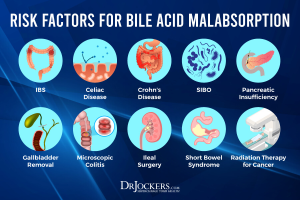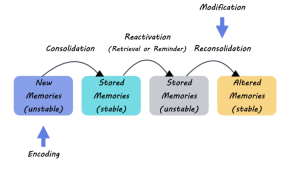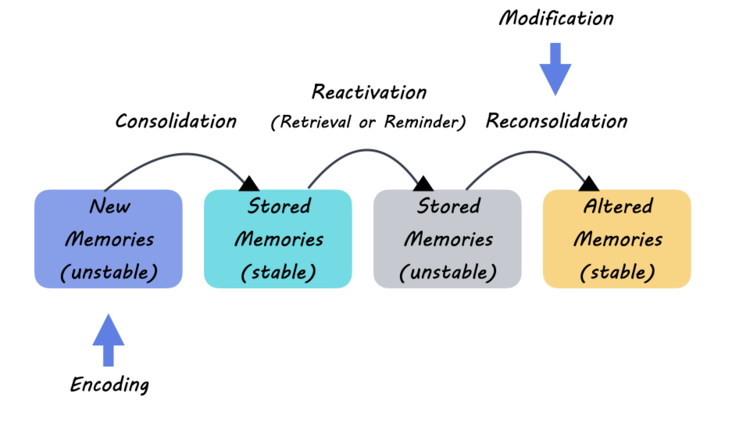Bile imbalance liver cancer is a pressing health topic that has recently gained attention due to its connection with hepatocellular carcinoma (HCC), the most prevalent type of liver cancer. Studies reveal that a disruption in bile acid metabolism can lead to severe liver diseases, prompting a renewed focus on liver cancer treatment strategies. Bile acids, essential for fat digestion, play numerous roles in metabolic regulation, making their proper balance crucial for liver health. The interaction between YAP and FXR, vital players in bile acid regulation, has emerged as a key area of research that could unlock new therapeutic approaches. By understanding these mechanisms, scientists aim to mitigate the risks associated with bile imbalance and improve outcomes for patients affected by liver cancer.
Exploring the relationship between bile acid dysregulation and liver oncology reveals significant insights into chronic liver conditions. The liver’s intricate processes involve the synthesis and management of bile acids, which, when imbalanced, can pave the way for diseases like hepatocellular carcinoma. Recent findings indicate that the interplay between cellular signaling pathways, particularly the YAP-FXR axis, might be pivotal in maintaining bile homeostasis. This highlights the importance of investigating bile acid fluctuations as a potential contributor to liver cancer progression. As scientists delve deeper into this research landscape, innovative liver cancer treatment methods based on bile acid metabolism could emerge, offering hope to many patients.
Understanding Bile Acids and Their Role in Liver Cancer
Bile acids are critical biomolecules produced by the liver that play an essential role in the digestion and absorption of fats. This unique group of steroids not only aids in the digestive process but also functions as signaling molecules that influence various metabolic pathways in the body. When the balance of bile acids is disrupted, it can lead to significant health issues, including liver diseases such as hepatocellular carcinoma (HCC), the most prevalent type of liver cancer. The intricate relationship between bile acid metabolism and liver function highlights the liver’s role in maintaining bodily homeostasis.
Recent studies have unveiled that dysregulation of bile acids can activate specific pathways that may contribute to liver injury and ultimately increase the risk of developing liver cancer. Researchers have found that the Hippo/YAP signaling pathway plays a critical role in this process. The interaction between YAP and FXR (Farnesoid X receptor), a nuclear receptor vital for bile acid regulation, has shown that YAP can repress FXR’s function. This repression disrupts bile acid homeostasis, leading to an excess accumulation of bile acids in the liver and subsequent fibrotic changes, which can escalate to cancerous growths. Therefore, maintaining proper bile acid metabolism is crucial in preventing the progression of liver cancer.
The Link Between Bile Imbalance and Hepatocellular Carcinoma
The connection between bile imbalance and hepatocellular carcinoma (HCC) has become increasingly evident through research exploring the underlying molecular mechanisms. When bile acids are produced in excess due to disrupted signaling pathways, they can lead to toxic effects on liver cells. Specifically, the action of YAP in inhibiting FXR has been associated with hepatic inflammation and fibrosis, both of which are precursors to the development of liver cancer. This pivotal role of bile acids in tumorigenesis offers a new perspective on the mechanisms driving liver cancer, presenting an urgent need for targeted therapeutic strategies.
Researchers are now focusing on the potential for pharmacological interventions that could rectify bile acid metabolism imbalances. By enhancing FXR’s activity, or by developing treatments that facilitate bile acid excretion from the liver, it may be possible to slow or even reverse the progression of liver cancer related to bile acid dysregulation. Experimental models have shown promise, indicating that manipulating signaling pathways associated with bile acid regulation could significantly mitigate liver damage and reduce the risk of developing HCC. The promising results in treatment efficacy illustrate the potential for harnessing bile acid signaling in the fight against liver cancer.
The Role of YAP in Bile Acid Metabolism
YAP (Yes-associated protein) is increasingly recognized for its significant role in regulating bile acid metabolism and its implications for liver cancer progression. While traditionally viewed as a promoter of cell growth, emerging evidence suggests that YAP acts as a repressor of FXR, critically disrupting bile acid homeostasis. This key interaction has profound implications for understanding how abnormal bile acid levels can lead to liver inflammation and fibrosis, ultimately heightening the risk of hepatocellular carcinoma (HCC). Investigating the dual role of YAP not only enriches our understanding of liver biology but may also open doors to innovative therapies targeting bile acid signaling pathways.
By elucidating the mechanisms through which YAP influences bile acid metabolism, researchers hope to develop targeted treatment strategies that can ameliorate liver damage. Interventions such as inhibiting YAP’s repressive effects or potentiating FXR activation could pave the way for novel pharmacological approaches to manage bile acid imbalances. Such strategies may not only slow the progression of liver diseases but could also serve as preventive measures against the development of liver cancer. As research continues, the concentration on the YAP-FXR axis may provide crucial insights into both the molecular pathology of liver cancer and the therapeutic avenues available to combat it.
Pharmacological Approaches to Correct Bile Imbalance
Recent studies advocate for pharmacological approaches to address bile imbalance as a viable strategy for combating liver cancer. One promising direction involves the activation of FXR, which plays an essential role in maintaining bile acid homeostasis. By enhancing FXR’s function, researchers aim to restore the balance of bile acids in the liver, reducing the risk of inflammation and fibrosis that lead to hepatocellular carcinoma (HCC). This therapeutic strategy underscores the potential of leveraging bile acid signaling pathways to develop new treatment modalities for liver cancer.
Moreover, targeting the YAP signaling pathway presents an attractive therapeutic target. By inhibiting YAP’s repressive function on FXR, researchers believe they could cultivate a environment that favors normal bile acid metabolism. Investigations into pathways that facilitate bile acid excretion or promote FXR activity have shown promise in preclinical models, thus paving the way for future clinical applications. The identification and exploitation of these therapeutic targets are crucial in establishing effective interventions against the complications stemming from bile acid dysregulation, particularly in the context of liver cancer.
Clinical Implications of Bile Acid Research
The insights gained from the exploration of bile acid metabolism and its implications for liver cancer have considerable clinical ramifications. Understanding the nuanced interplay between bile acids, the YAP signaling pathway, and liver function can guide clinicians in designing personalized treatment plans for patients suffering from liver diseases. For instance, the identification of individuals with bile acid dysregulation might lead to early interventions that could mitigate the progression to hepatocellular carcinoma (HCC). Furthermore, these discoveries catalyze the development of novel biomarkers that may aid in the early detection of liver cancer linked to bile imbalance.
Additionally, advances in pharmacological treatments that target bile acid regulated pathways could significantly alter the standard of care for liver cancer patients. By integrating these new therapeutic interventions focused on restoring bile acid homeostasis, healthcare providers could improve patient outcomes and potentially extend survival rates. The field of liver cancer treatment is on the cusp of transformation, where targeted therapies based on the molecular understanding of bile metabolism may lead to remarkable breakthroughs in how we approach and manage liver cancer.
Future Directions in Bile Acid Metabolism Research
Future research into bile acid metabolism will likely continue to unveil new therapeutic avenues in the context of liver cancer. With ongoing investigations into the precise molecular mechanisms governing bile acid homeostasis and the effects of signaling pathways like YAP and FXR, scientists are poised to discover innovative strategies for intervention. Understanding how lifestyle factors and dietary changes influence bile acid metabolism may also become paramount, providing an avenue for preventive approaches against liver diseases and liver cancer.
Furthermore, the advancement of targeted therapies that can stabilize or rectify bile acid levels in patients poses exciting possibilities for clinical applications. As researchers delve deeper into exploring the interactions between bile acids and metabolic pathways, the potential for translating these findings into effective treatments for hepatocellular carcinoma grows. The pursuit of optimizing liver health through targeted bile acid interventions exemplifies the promise of modern medicine, moving towards more effective and comprehensive approaches to treating liver cancer.
The Importance of Early Diagnosis of Liver Cancer
Early diagnosis of liver cancer is crucial for improving patient outcomes, as the prognosis for hepatocellular carcinoma (HCC) heavily relies on the stage at which it is diagnosed. The relationship between bile imbalance and the onset of liver cancer underscores the need for vigilant monitoring of liver health and the recognition of risk factors associated with bile acid dysregulation. Routine screening, especially in high-risk populations, can facilitate the timely identification of liver tumors, allowing for more effective treatment options and improved survival rates.
Implementing regular assessments of bile acids in individuals with liver conditions may provide valuable insights into the progression of liver diseases and the risk of developing HCC. By integrating advanced diagnostic technologies with emerging knowledge of metabolic pathways, healthcare providers can enhance the effectiveness of surveillance efforts. As research continues to shed light on the connections between bile imbalance and liver cancer, the healthcare community can better equip itself to address this formidable challenge in liver disease management.
Enhancing Public Awareness about Liver Cancer
Raising public awareness about liver cancer, particularly regarding the links between bile imbalances and hepatocellular carcinoma (HCC), is essential for fostering community engagement in health promotion and disease prevention. Many individuals remain unaware of how lifestyle choices, such as diet and alcohol consumption, can influence bile acid metabolism and impact liver health. By providing educational resources and outreach programs, we can empower individuals with the knowledge needed to make informed decisions that promote liver health and reduce the risk of liver cancer.
Moreover, public health campaigns should emphasize the importance of early detection and regular liver health monitoring, particularly among high-risk groups. Increased awareness can lead to proactive health behaviors and encourage individuals to seek medical advice if they experience symptoms associated with liver dysfunction. As communities grow more informed about the dangers of bile imbalance and liver cancer, we can collectively work towards reducing the incidence of this pervasive disease and improving overall public health outcomes.
Nutrition’s Role in Supporting Liver Function
Nutrition plays a pivotal role in maintaining bile acid balance and supporting overall liver function. A diet rich in nutrients can help regulate the production and metabolism of bile acids, essential for digestion and absorption. Foods that promote liver health, including leafy greens, healthy fats, and high-fiber options, can positively influence bile acid metabolism and contribute to the prevention of liver diseases, including hepatocellular carcinoma (HCC). By integrating dietary interventions into liver health strategies, individuals can take significant steps toward mitigating the risk of bile imbalances.
Furthermore, addressing nutritional deficiencies and adopting a well-balanced diet can foster optimal liver function and nutrient absorption. The relationship between specific food components and bile acid regulation underscores the importance of dietary choices in liver care. Research into functional foods and their protective roles against liver cancer will likely continue to illuminate effective nutritional therapies that can support liver health and possibly stave off the progression of liver-related diseases. Therefore, promoting nutritional awareness is integral to the broader conversation about liver cancer prevention.
Frequently Asked Questions
What is the connection between bile imbalance and liver cancer?
Bile imbalance can lead to liver diseases, including hepatocellular carcinoma (HCC), the most prevalent form of liver cancer. Disruption in bile acid metabolism triggers liver injury and inflammation, ultimately contributing to cancer development.
How do bile acids relate to liver cancer treatment?
Bile acids play a critical role in liver cancer treatment by influencing bile acid metabolism. Research indicates that targeting the FXR (Farnesoid X receptor) involved in bile homeostasis may offer therapeutic avenues to mitigate liver cancer progression.
What role does the Hippo/YAP pathway play in bile acid metabolism and liver cancer?
The Hippo/YAP pathway is involved in regulating cell growth and metabolism. YAP’s repressor function disrupts the bile acid sensor FXR, leading to bile acid overproduction, inflammation, and liver cancer growth.
Can enhancing FXR function improve outcomes for liver cancer patients?
Yes, enhancing FXR function could improve liver cancer outcomes by regulating bile acid metabolism. Researchers have found that stimulating FXR can help reduce liver damage and slow cancer progression.
What strategies are being researched to combat bile imbalance and liver cancer?
Current research is focused on blocking YAP’s repressive actions, enhancing FXR activity, and promoting bile acid excretion to combat bile imbalance. These strategies may provide novel pharmacological interventions for liver cancer treatment.
Why is bile acid homeostasis important in liver cancer?
Bile acid homeostasis is essential in liver cancer prevention, as imbalances can result in liver injury and inflammation. Proper regulation of bile acids can mitigate the risk of developing hepatocellular carcinoma.
What are the implications of YAP’s influence on metabolic control in liver cancer?
YAP’s regulation of metabolic control, particularly in relation to bile acid metabolism, underscores the interconnectedness of liver metabolism and cancer progression, presenting opportunities for new treatment strategies in managing liver cancer.
How does inflammation from bile imbalance contribute to liver cancer?
Inflammation caused by bile imbalance leads to chronic liver damage and fibrosis, creating an environment conducive to the development of hepatocellular carcinoma. This inflammatory process is a critical factor in cancer progression.
What are the potential therapeutic targets identified in the study on bile acids and liver cancer?
The study identifies FXR as a potential therapeutic target, indicating that stimulating FXR function, inhibiting YAP’s repressive role, or enhancing bile acid export may provide new treatment options for liver cancer.
What ongoing research is being conducted on bile acids related to liver cancer?
Ongoing research is exploring the interactions between bile acids, the Hippo/YAP pathway, and liver cancer development to identify new therapeutic strategies and to enhance our understanding of liver function and cancer biology.
| Key Points |
|---|
| A critical imbalance in bile acids can trigger liver diseases such as hepatocellular carcinoma (HCC), the most common liver cancer. |
| A molecular switch regulating bile acid metabolism has been identified, providing new insights for potential treatments. |
| YAP, a protein in the Hippo/YAP signaling pathway, acts as a repressor of a vital bile acid sensor, FXR, leading to liver damage and cancer. |
| Overproduction of bile acids due to FXR paralysis can result in liver inflammation and fibrosis, contributing to cancer progression. |
| Strategies to enhance FXR function or promote bile acid excretion could potentially halt the damaging cycle leading to liver cancer. |
| The findings underscore the importance of YAP’s role in metabolic control and liver cancer development, paving the way for pharmacological solutions. |
Summary
Bile imbalance liver cancer is a significant health concern, as new research highlights how disruptions in bile acid regulation can lead to hepatocellular carcinoma (HCC). By understanding the molecular mechanisms behind bile acid metabolism, specifically the role of the YAP protein and FXR sensor, researchers are uncovering potential treatment strategies. This highlights the intricate link between bile production, liver health, and cancer, pointing to innovative pharmacological avenues for combatting liver cancer.









